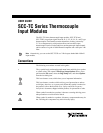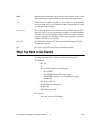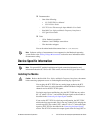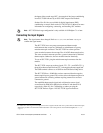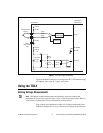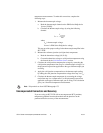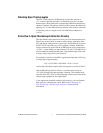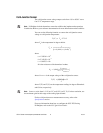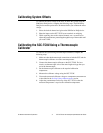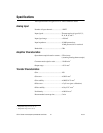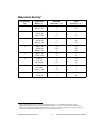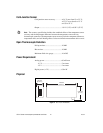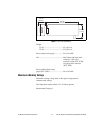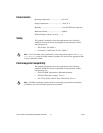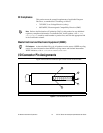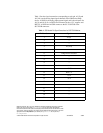© National Instruments Corporation 7 SCC-TC Series Thermocouple Input Modules User Guide
Detecting Open Thermocouples
The SCC-TC0X contains a 10 MΩ pull-up resistor that connects to
+5 V to detect open thermocouples. To determine if you have an open
thermocouple, check whether the corresponding E/M Series DAQ device
channel is saturated. The pull-up and bias resistors saturate the channel by
applying +2.5 V at the input of an open channel. This results in saturation
to either the positive or negative rails of the EM Series DAQ device
(±10 V).
Errors Due to Open-Thermocouple Detection Circuitry
The open-thermocouple detection circuitry can cause measurement errors.
These errors are the results of common-mode voltage at the input of the
SCC and current leakage into the signal leads. The 10 MΩ bias resistor in
the SCC-TC0X causes this error to be negligible. With the 10 MΩ bias
resistor connected to ground and the 10 MΩ pull-up resistor connected to
+5 VDC, a current leakage of approximately 0.25 μA (5 V/20 MΩ) flows
into the unbroken floating thermocouple. Long thermocouple leads result
in larger voltage drops due to lead resistance.
For example, if you have a 24 AWG J-type thermocouple that is 20 ft long,
a voltage drop of approximately
4 μV = (0.145 Ω/ft + 0.658 Ω/ft) × 20 ft × 0.25 μA
can develop in the thermocouple, which corresponds to an error of 0.09 °C.
With 10 MΩ pull-up and bias resistors, a common-mode voltage of
+2.5 VDC develops if the thermocouple is floating. The common-mode
rejection of the SCC-TC0X is sufficiently high, which results in the offset
voltage being negligible in most applications.
If your application demands extremely high accuracy, you can eliminate
these errors by calibrating the system. Refer to the Calibrating the
SCC-TC0X Using a Thermocouple Calibrator section for more
information.



